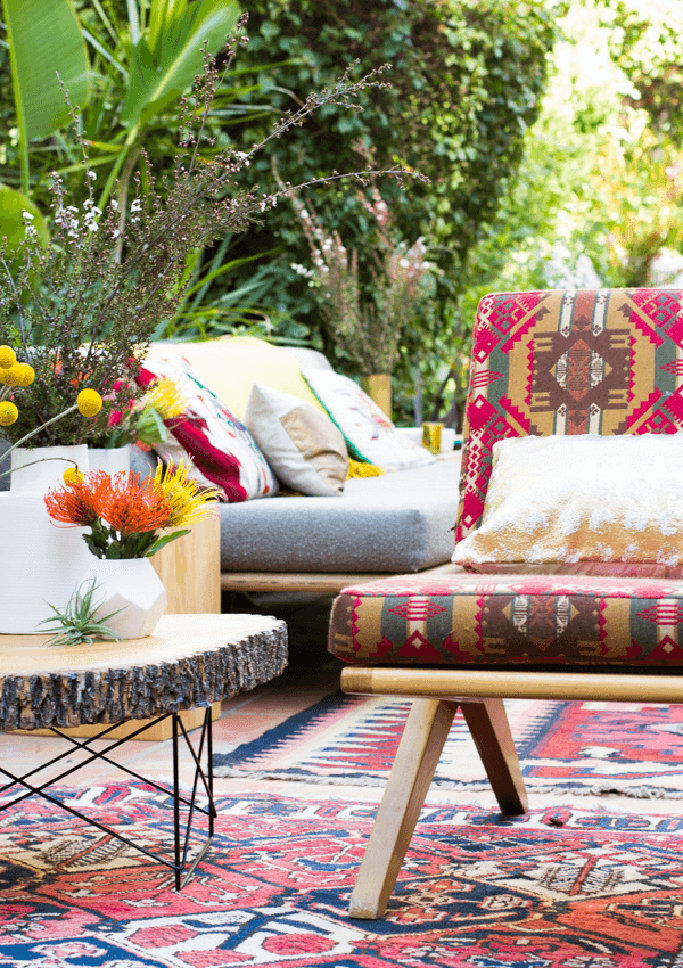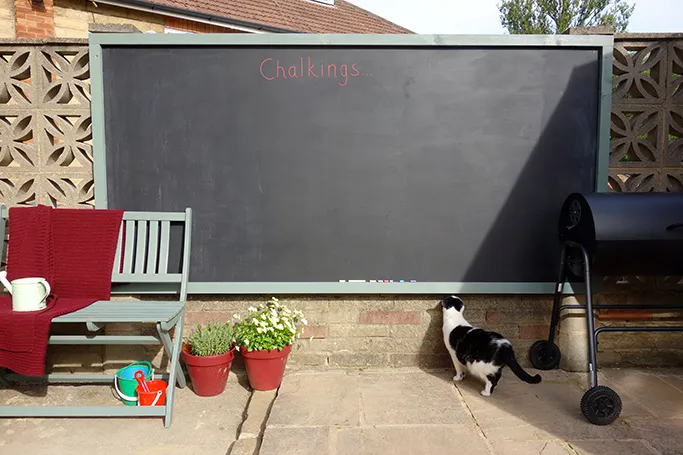Today, as the third in a series of fantastic guest bloggers, we’re excited to welcome Stacey Sheppard. Stacey is the creator of the multi award-winning UK interiors blog The Design Sheppard as well as a freelance journalist. With two young children, we thought she’d be the perfect person to talk about how to get a truly family friendly garden that will delight children as well as adults.
Now that summer is well and truly underway, (not that you’d have guessed from the weather we have been having here in the UK) our thoughts automatically turn to spending more time outdoors. Those of us lucky enough to have gardens obviously want to make as much use of them as possible when the weather permits. I’ve spent quite a bit of time this year already thinking about our back garden and how we can make the best use of the space that we have. With two daughters under three years old, we obviously need a space that is practical, safe, and fun for the girls but that can also double as a calm and relaxing area that my husband and I can enjoy in our downtime (not that we actually get much of that with two small kids).
So I’ve been researching ways to create a family-friendly garden as this will be the next project on our list of home improvements. Of all the things I’ve learnt, I think the most important is to try to zone your garden so that you provide specific areas for children to play in and adults to relax in. By keeping these areas separate, you are able to create a more flexible space that works for everyone.

The adult area is normally used for entertaining and relaxing. It’s a place that needs to feel comfortable and atmospheric. Outdoor rugs, big cushions, soft blankets and lighting help to create a really cosy space. This is where you will probably situate the BBQ and spend time indulging in al fresco dining. It’s also the area where you can position any fragile decorative plants, vegetable gardens, or raised beds, basically anything that needs to be kept away from the children. Outdoor art work can also make this space feel more grown up and civilised.

Most people will probably choose to have this adult area directly behind the house as it makes it easier to transport food and dining essentials from the house to the garden. However, it really depends on your own personal garden layout and what areas of your garden get the sun at what times of the day. This space works well as a standard patio, or with wooden decking, but it is worth investigating the kinds of tiles that you can use in outdoor spaces. Porcelain tiles, stone tiles, and quarry tiles can all be used outside and can prove to be much easier to look after with minimal maintenance required.

Most people would probably choose to position the children’s play area down the far end of the garden to reduce the likelihood of rogue footballs and other play equipment coming in contact with the house. However, it is important to place the play area within sight of the house so that you can keep an eye on the children whilst they play.
Safety is always paramount when it comes to kids so it is worth bearing in mind what kind of surfacing to use in the play area. Paving, decking, tiles and gravel probably aren’t suitable as they won’t provide a cushioned landing should the children fall. Grass, bark or rubber chippings are probably safest. It’s also important to think carefully about any water features or ponds you may have in the garden and what risks this could pose.
When thinking of children’s play areas, garish plastic climbing frames probably spring to mind but it is possible to create a child-friendly space without relying on such equipment, which children can grow out of quite quickly. For example, a sturdy pergola can easily be made to support a swing and once the children no longer use the swing, it can be removed so the pergola can be re-purposed. Likewise, playhouses will only be relevant for a couple of years before they are outgrown. It makes more sense to erect a summer house that children can play in. This can grow with them and be transformed into a cosy den when they hit the teenage years. It can also be reclaimed once the children no longer use it and turned into an adult area.

It is also possible to conceal children’s toys so your garden doesn’t resemble a play park. Trampolines, for example, can be buried at ground level so they don’t become an eyesore. This also makes them safer as there is no chance of falling off. Bare walls can be turned into climbing walls with the addition of a few climbing holds. They can also be turned into giant chalk boards with a quick lick of blackboard paint. Sandpits can be embedded into the garden and covered to keep the rain and the animals out.

With careful thought and consideration it becomes easy to see how it is possible to create a family- friendly garden that is flexible enough to suit all your needs. It needn’t cost the earth either if you stick with ideas that can grow with your family.
Shop outdoor tiles for your next garden project.
Stacey Sheppard is a freelance writer and blogger who specialises in interior design. She lives in Dartmouth in the beautiful rolling hills of Devon. The Design Sheppard is her online home where she rounds up the very best products, projects, events and designers that cross her path. The blog covers both high-end design and more budget friendly high-street finds that can help people recreate the latest design trends in their own homes. Stacey has a particular penchant for wallcoverings and has recently become a little obsessed with mattresses of all things, probably due to the severe lack of sleep that comes with having two little daughters under the age of three.
[isc_list]
As a multi-award winning interior design content creator, Kimberly Duran is an Interior Design-obsessed American ex-pat, who chronicles her decorating journey and dispenses interior design advice in her personal blog, Swoon Worthy. When she’s not helplessly drooling over all the latest trends in design, she’s adding things to the imaginary ‘shopping basket’ in her head, she likes to get messy tackling DIY projects with her partner in crime, Wayne, stalking eBay for vintage bargains and filling her home with her favourite neutral – gold.


Love the ideas….esp the the chalkboard idea is brilliant. The hammock looks so inviting.
So happy you enjoyed the post Pratima! xx